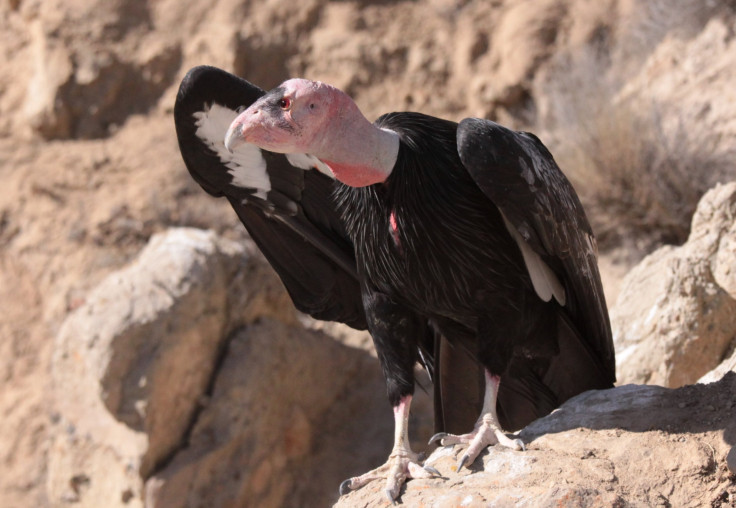Lead Ammunition Ban Could Restore California Condors In The Wild

With a wingspan of almost 10 feet, the California condor (Gymnogyps californianus) is the largest land bird in North America, and with a lifespan of up to 60 years, is also one of the world’s longest-living birds. It also holds a special place in the culture of many Californian Native American groups, but due to human activity (what else?) has been driven to verge of extinction.
G. californianus actually went extinct in the wild in 1987, and only 27 individuals remained in captivity. Through breeding programs, their numbers has gone up to about 410 birds currently, some of which have been reintroduced into the wild. But the majestic scavengers who once roamed from California to Florida and western Canada to northern Mexico are still threatened, and listed as critically endangered in the Red List of Threatened Species maintained by the International Union for the Conservation of Nature.
According to a study Wednesday in the journal The Condor: Ornithological Applications, published by the American Ornithological Society (AOS), there is optimism that condors may thrive in the wild in larger numbers, thanks to a ban on lead ammunition for hunting across the entire state of California that is slated to take effect July 1, 2019.
“Lead, which condors consume when scavenging at carcasses of animals killed with lead ammunition, is the main factor limiting their recovery; lead toxicosis was responsible for 26 percent of juvenile condor deaths and 67 percent of adult condor deaths between 1992 and 2009,” according to a statement by AOS.
Chris West of Yurok Tribe from Northern California — a region where the large birds have not existed in the wild for over 100 years now — and his colleagues assessed the feasibility of the return of condors to the region by looking at data for two other scavenging birds — turkey vultures and common ravens.
They collected blood samples from 137 vultures and 27 ravens from across nine sites in the region, between the years 2009 and 2013. Levels of lead in the ravens’ blood samples was found to be about six times higher during hunting season than the rest of the year. Vultures, who are migratory in nature, could not be studied seasonally, but older individuals were found to have higher lead levels than younger birds, an indicator that the older, more dominating birds kept the younger ones away from feeding off carcasses.
Kelly Sorenson, a condor recovery expert and executive director of the Ventana Wildlife Society, who was not involved with the study, said in the statement: “Northern California still has viable habitat for free-flying California Condors, and these results suggest it is possible to succeed in this region, particularly as a broader switch from lead to non-lead ammunition use is realized. If we fix the lead problem, condors should survive in the wild again without the assistance of people, whether in Northern California or other suitable locations where they are being released.”
The locations where condors may be released in Northern California are yet to be decided, but the process to choose them is already underway.
“Our hopes for condor reintroduction to our area and recovery overall is very high. We are currently going through the National Environmental Policy Act (NEPA) process to select release locations and assess and mitigate impacts to land owners and managers in the region,” West said in the statement.
The paper is titled “Feasibility of California Condor recovery in northern California, USA: Contaminants in surrogate Turkey Vultures and Common Ravens.”
© Copyright IBTimes 2024. All rights reserved.





















